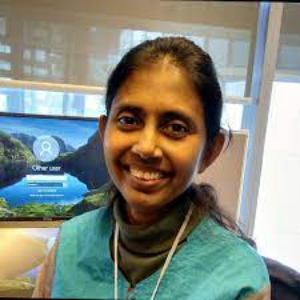Title : Soil erosion monitoring in support of achieving SDGs
Abstract:
The human-induced climate change and land-use change are threatening the health of soil ecosystems. A healthy soil ecosystem improves the agricultural productivity in the farming lands. The soil erosion and soil erosion hazards are influenced by factors such as rainfall, wind and land-use change in many parts of the world. This study aims to monitor the soil erosion at farmlands using different tools and techniques: index-based methods, statistical tools, and machine learning algorithms to detect and quantify the soil erosion to improve land productivity to ensure food security achieving sustainable development goals (SDGs). Extreme rainfall patterns and land-use change were observed and predicted to monitor soil erosion and prevent soil erosion hazards concerning sustainable land management for agriculture production. Many researchers identified developing nations in tropical and subtropical regions are highly vulnerable and noticeably victims of climate hazards. One of the tropical climate hazards vulnerable areas, the Central Highlands of Sri Lanka, was selected for this study. The soil erosion was monitored by vegetation indices, economic and ecological indices, empirical models like revised universal soil loss equation (RUSLE), Machine learning approaches as such Artificial neural networks (ANN), Support vector machine (SVM), Adaptive network-based fuzzy inference system (ANFIS) and deep learning methods like long short-term memory neural network model (LSTM) combined with RUSLE. Results were used to identify the most vulnerable farming areas in Low country Wet Zone (WL1a) and Mid country Wet zone (WM1b). Secondly, identified climate influence is much greater than the human-influenced land-use change. Thirdly, soil erosion rates and vulnerability predictions indicate that the most vulnerable farming areas will be more vulnerable if proper mitigation measures, resilience building activities and policy-level decisions are not introduced. The soil-related indicators help to support measuring the achievement related to the SDGs: 2-zero hunger, 3-good health and well-being, 6- clean water and sanitation, 13- climate action, 15 - life on land and 17- partnership which are directly connected with the soil related activities. Minimizing soil erosion would be a solution for reducing the nutrient depletion in farmlands, reducing polluting water bodies, and restoring land degradation, which helps sustain the soil ecosystem in achieving the SDGs.



